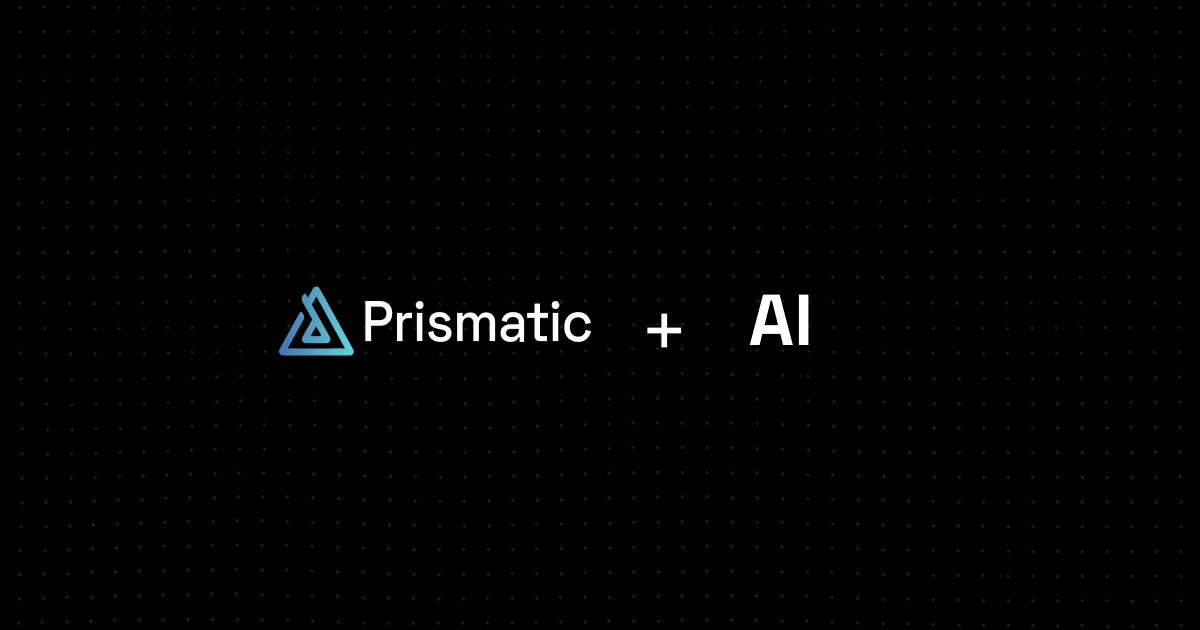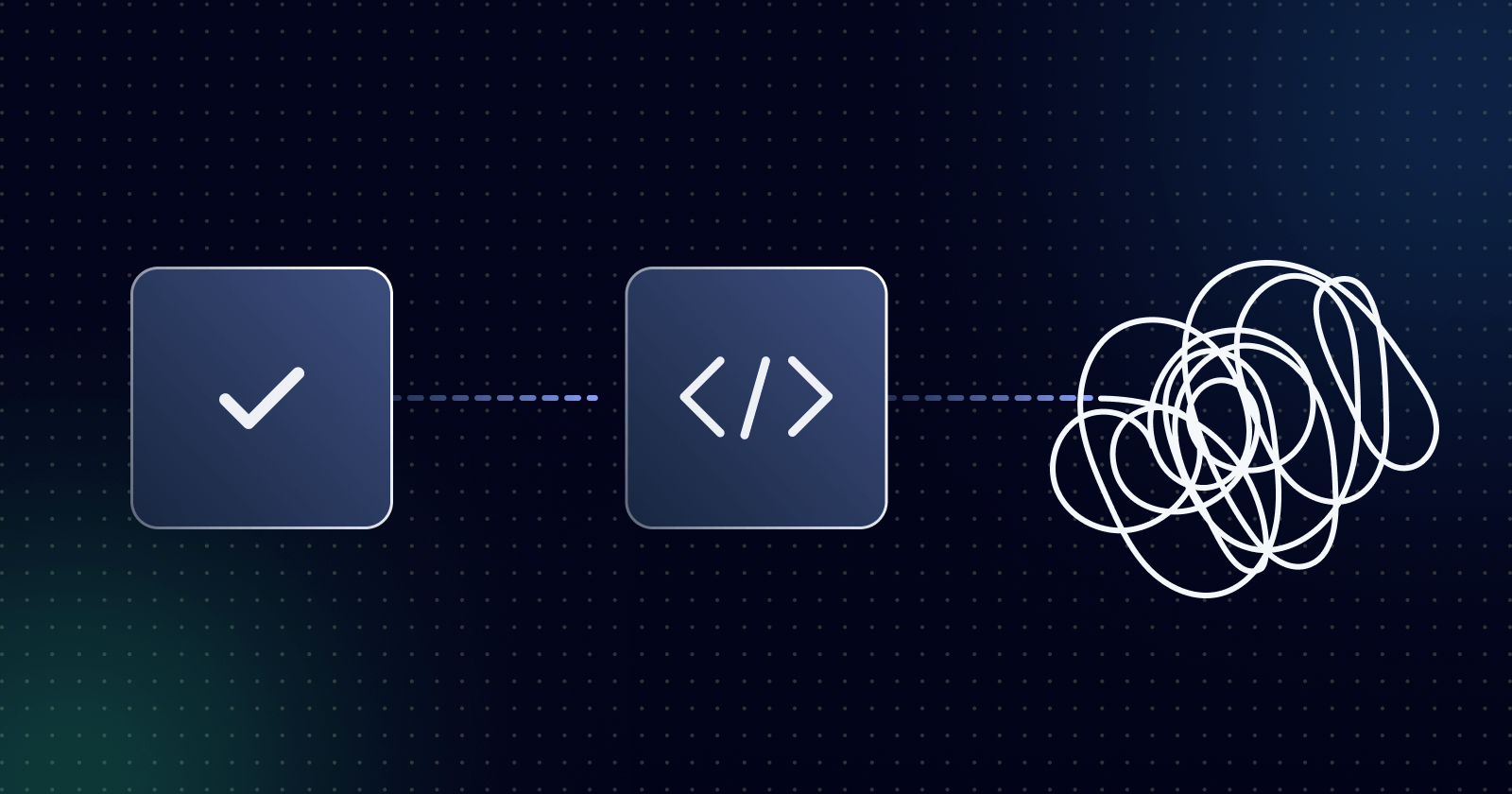A low-code integration platform is a software solution that allows businesses to seamlessly link applications and automate workflows with little to no coding required. These platforms offer intuitive, visual interfaces – often drag-and-drop designers – that allow devs and non-devs users alike to build, deploy, and manage integrations efficiently. By reducing reliance on writing custom code, low-code integration platforms accelerate development, lower costs, and make integrations accessible to a broader range of users.
Key features include pre-built connectors for popular apps such as Salesforce, Slack, or HubSpot, workflow templates, and tools for monitoring and troubleshooting integrations. Some low-code integration platforms, like Prismatic, allow devs to write custom code or build custom connectors for unique or proprietary systems, ensuring versatility for complex use cases.
When to use a low-code integration platform
Choosing the right platform depends on what you need to do. Here are some scenarios:
- Automating internal processes – Your company needs to sync data between a CRM, an ERP, and a marketing platform to improve internal efficiency. An enterprise iPaaS with low-code tools allows your IT team or business analysts to build workflows, such as syncing customer data or automating email triggers, without writing extensive code.
- Delivering customer-facing integrations – Your B2B SaaS product (a billing platform) must integrate with customers' accounting systems, including custom-built ones. Prismatic's embedded iPaaS provides a low-code designer to build reusable integrations and an integration marketplace for customers to activate them.
- Empowering non-dev teams – Your sales team wants to connect a CRM to a data analytics tool to track performance metrics, but lacks coding skills. A citizen integration tool enables them to create this integration using available connectors and a visual interface.
Types of low-code integration platforms
Low-code integration platforms serve distinct purposes. They can be categorized as:
- Enterprise iPaaS (integration platform as a service) – Focused on internal integrations, these platforms help businesses connect apps like CRMs, ERPs, or HR systems to streamline internal workflows. They prioritize connectivity and include connectors for common and uncommon SaaS apps, enabling rapid automation for IT teams. Boomi is a good example of this category.
- Embedded iPaaS – Tailored for B2B SaaS companies, embedded iPaaS platforms like Prismatic are designed for customer-facing integrations. They offer low-code designers, integration marketplaces, and embedded tools to help SaaS providers connect their products to customers' apps, scaling with customer growth. Prismatic is a good example of this category.
- Citizen integration tools – Geared toward non-devs (citizen integrators), these platforms emphasize simplicity, allowing business users to create basic integrations without engineering involvement. Zapier is a good example of this category.
Benefits of low-code integration platforms
Low-code integration platforms deliver:
- Speed and efficiency – Pre-built connectors and reusable components, such as those in Prismatic's library, cut development time significantly compared to coding integrations from scratch.
- Accessibility – Non-devs can use a drag-and-drop integration designer to create integrations, reducing the burden on engineering teams. Prismatic's low-code designer, for instance, allows business users to configure workflows with minimal training.
- Flexibility – Platforms support custom code for advanced needs. Prismatic enables devs to write JavaScript or TypeScript for custom logic or connectors, ensuring no integration is out of reach.
- Scalability – Embedded iPaaS platforms are built to handle growing customer bases, with features like Prismatic's instance management to support hundreds or thousands of customer-specific integrations.
- Enhanced customer experience – For SaaS companies, embedded iPaaS offers integration marketplaces and customizable UIs, allowing customers to self-serve integrations within the SaaS product's interface.
- Cost savings – By streamlining development and empowering non-dev users, low-code platforms reduce the need for extensive dev resources, lowering overall costs.
How low-code integration platforms work
Low-code integration platforms simplify app connectivity through:
- Visual designers – Drag-and-drop interfaces, like Prismatic's integration designer, allow users to map data flows and configure integrations without coding.
- Pre-built connectors –Libraries of connectors for apps like HubSpot, Shopify, or Zendesk streamline setup. Prismatic's connectors include authentication and error-handling logic for reliability.
- Custom code support – Devs can extend functionality with custom code. Prismatic supports TypeScript for building custom components or handling complex data transformations.
- Integration management – Tools for monitoring, logging, and error alerts ensure integrations run smoothly. Prismatic's dashboard provides real-time insights into integration performance.
- Embedded features – Prismatic offers embedded workflow builders and marketplaces for customer-facing integrations, allowing customers to configure integrations directly within your app's UI, branded to match your product.
Prismatic's platform, for example, combines a low-code designer with a cloud-native infrastructure, enabling rapid development, deployment, and management of integrations. Non-devs can build simple workflows, devs can add custom logic, and customers can use embedded tools to create their own workflows, reducing support overhead and improving time to value.
Discover how SaaS companies use Prismatic's low-code designer and embedded workflow builder to deliver customer integrations faster.
Choosing the best low-code integration platform
To select the best platform, consider these factors:
- Use case – Internal integrations call for enterprise iPaaS, while customer-facing integrations benefit from an embedded iPaaS like Prismatic. Citizen integration tools suit simple non-dev needs.
- Scalability – Ensure the platform supports growth. Prismatic's instance management scales to thousands of customer integrations without performance degradation.
- Flexibility – Look for platforms that balance low-code simplicity with custom code options. Prismatic's code-native capabilities ensure complex integrations are achievable.
- Customer experience – For SaaS providers, choose platforms with integration marketplace capabilities. Prismatic's iframe and SDK options allow seamless, branded integration UX.
- Support and monitoring – Prioritize platforms with robust logging and alerting. Prismatic's built-in tools help teams proactively manage integration health.
The future of low-code integration platforms
Low-code integration is rapidly evolving as AI reshapes how integrations are designed and scaled. Emerging trends include:
- AI-generated integration flows
- Building custom components with AI-powered coding tools
- Model Context Protocol (MCP) enabling AI-based integrations
- Deeper DevOps integration
FAQs
Q: Can low-code integration platforms handle complex integrations?
A: Yes, platforms like Prismatic combine low-code designers with code-native options, allowing devs to handle complex logic or custom connectors for proprietary systems.
Q: Who benefits most from low-code integration platforms?
A: Low-code integration platforms benefit a wide range of users: B2B SaaS companies use embedded iPaaS like Prismatic to deliver scalable customer integrations; enterprises leverage enterprise iPaaS to streamline internal workflows; and non-dev teams use citizen integration tools to automate tasks with no coding expertise. Prismatic's platform, for example, empowers devs, non-devs, and customers alike, allowing it to handle the full range of B2B SaaS use cases.
Q: What are the drawbacks of low-code integration platforms?
A: While powerful, low-code platforms have limitations. They don't fully replace custom coding for highly specialized integrations, requiring dev intervention for complex logic. Some platforms may lack connectors for niche apps, necessitating custom builds. Additionally, over-reliance on low-code tools can lead to vendor lock-in if the platform's ecosystem is proprietary. Prismatic mitigates this with flexible code-native development using TypeScript.
Q: Why choose embedded iPaaS over other low-code platforms for B2B SaaS?
A: Embedded iPaaS is optimized for customer-facing integrations, offering features like integration marketplaces and embedded workflow builders that enterprise iPaaS and citizen tools lack, ensuring a first-class customer experience.
Q: How do low-code integration platforms compare to traditional integration methods?
A: Low-code integration platforms offer faster development, accessibility for non-technical users, and pre-built connectors, unlike traditional methods that rely heavily on custom coding. While these in-house approaches provide maximum control, they are time-consuming and resource-intensive. Platforms like Prismatic combine low-code speed with custom code flexibility, offering a balanced alternative that covers all the B2B SaaS use cases.
Q: Can low-code integration platforms integrate with legacy or on-premise systems?
A: Yes, many low-code platforms, including Prismatic, support integrations with legacy and on-premise systems through custom connectors and security-first on-premise agents. Prismatic's code-native capabilities also allow devs to build connectors for proprietary systems, ensuring compatibility with older technologies alongside modern SaaS apps.
Q: How do low-code integration platforms support team collaboration?
A: Low-code platforms foster collaboration by enabling non-dev users to create basic integrations while devs handle complex tasks. Prismatic, for example, offers a visual designer for business users and code-level access for devs, with shared tools like integration marketplaces and dashboards to streamline teamwork and customer support.
Getting started with low-code integration platforms
Low-code integration platforms streamline app connectivity, saving time and empowering devs and non-devs. For B2B SaaS companies, an embedded iPaaS like Prismatic offers the tools to build, deploy, and manage customer-facing integrations with unmatched speed and flexibility.
Ready to supercharge your B2B integration strategy? Schedule a demo to discover how our low-code platform can transform your integration strategy, decreasing time to value and giving your devs more time to work on your core product.




